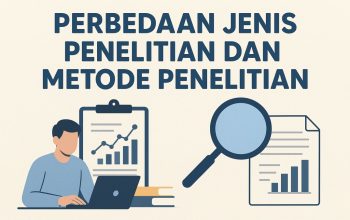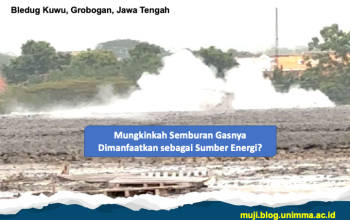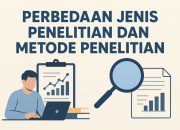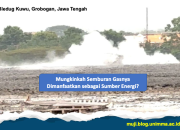Awal tahun 2021, Fakultas Teknik Unimma menerbitkan jurnal baru “Mechanical Engineering for Society and Industry” yang kemudian dikenal dengan sebutan MESI. Seperti diketahui, teknik mesin adalah cabang ilmu teknik yang menggabungkan prinsip-prinsip fisika dan matematika teknik dengan ilmu material untuk merancang, menganalisis, membuat, dan memelihara sistem mekanik (mekanik, energi, material, manufaktur) dalam memecahkan masalah teknik yang kompleks. Oleh karena itu, jurnal ini menampung seluruh dokumentasi penelitian dan laporan penerapan teknologi di masyarakat dan industri dari berbagai tingkat kesiapan teknologi (TKT). Dan sesuai dengan misi penerbitan kami, kami memprioritaskan penelitian yang berkontribusi pada program Sustainable Development Goals (SDGs).
| Full journal title | Mechanical Engineering for Society and Industry |
| Abbreviated title | Mech. Eng. Soc. Ind. |
| Journal initial | MESI |
| ISSN (electronic) | 2798-5245 |
| Publisher | Universitas Muhammadiyah Magelang |
| Publisher location | Magelang, Indonesia (see our map) |
| Postal Address | Jl. Bambang Sugeng km.05 Mertoyudan Magelang, 56172 |
| Editors | see: Editorial Board |
| Publication frequency | Biannually |
| Publication medium | Electronic only |
| Publication website | https://journal.unimma.ac.id/index.php/mesi/index |
| First-year published | 2021 |
| Indexing databases | see: Indexing & Abstracting |
Volume 1 Nomor 1 (2021)
Volume 1 Nomor 1 diterbitkan pada bulan Juli, setelah MESI menerima E-ISSN: 2798-5245. Artikel pertama, dibuka dengan sebuah preface yang diisi oleh Prof. Heri Hermansyah (BRIN), Dr. Lukman (Dewan Pakar Akreditasi Jurnal Nasional), Prof. Harun Joko Prayitno (Forum Jurnal Ilmiah PTMA), Dr. Lilik Andriyani. M.Si (Rektor Unimma), dan Yun Arifatul Fatimah, PhD (Dekan FT-Unimma). Prafece ini berisi motivasi kepada Editor MESI untuk menerbitkan artikel-artikel berkualitas dengan standar etika penerbitan yang tinggi [1]. Artikel kedua, merupakan artikel editorial yang membahas tentang peran bidang teknik mesin di era industri 4.0 [2]. Artikel ketiga, membahas tentang desain hospital bed untuk perawatan diabetes yang merupakan sebuah penemuan untuk mendukung praktek Keperawatan profesional dan higienis [3]. Artikel selanjutnya mendiskusikan tentang sistem kontrol bahan bakar untuk kendaraan transmisi planetary yang merupakan kontribusi untuk komunitas kendaraan berbahan bakar LPG [4]. Artikel selanjutnya, membahas tentang karakterisasi, pemodelan dan optimasi produksi biodiesel dari minyak jelantah [5]. Artikel berikutnya membahas analisis komprehensif pusat gravitasi minibus [6] dan artikel terakhir mendiskusikan evaluasi kekuatan tarik dan densitas komposit dari limbah kain katun dan High-Density Polyethylene (HDPE) [7].
Volume 1 Nomor 2 (2021)
Volume 1 nomor 2 dibuka dengan sebuah artikel editorial yang membahas peran komposit untuk masyarakat dan industri berkelanjutan, yang berisi ringkasan tentang komposit berbasis lignoselulosa, komposit berpenguat serat alam, silinder komposit untuk kendaraan berbahan bakar sas, dan pemanfaatan bambu untuk penguatan komposit [8]. Artikel kedua mendiskusikan tentang kemajuan terbaru dalam produksi nanopartikel aluminium oksida (Al2O3) [9]. Artikel ketiga membahas data faktor emisi-emisi gas dari pembakaran biomassa kayu sebagai bahan bakar potensial untuk pembakaran pembangkit listrik tenaga panas di Nigeria [10]. Artikel keempat, mendiskusikan tentang penekanan waktu pengelasan, kandungan gas pelindung dan oksigen dalam fluks aktif pada struktur mikro pengelasan [11]. Artikel selanjutnya melaporkan transfer teknologi pembentukan logam dari pakar ke industri untuk meningkatkan efisiensi produksi [12]. Artikel terakhir di volume 1 nomor 2 membahas pengaruh pemanfaatan panas berlebih terhadap biaya produksi semen [13].
Volume 2 Nomor 1 (2022)
Issue ini dibuka dengan sebuah artikel editorial bertajuk “alternative fuels for transportation sector in Indonesia”, dimana potensi-potensi bahan bakar baru dan terbarukan untuk sektor transportasi dibahas secara ringkas [14]. Artikel selanjutnya melaporkan pengaruh silika terhadap sifat mekanik kanvas rem berbahan dasar cangkang sawit [15]. Artikel kedua merupakan artikel review yang mengomentari masalah lingkungan dan langkah-langkah pengendalian emisi pada industri semen [16]. Artikel berikutnya membahas secara detail tentang pengaruh daya dan diameter terhadap suhu dan frekuensi pada proses pemanasan induksi baja AISI 4140 [17]. Artikel keempat dalam issue ini melaporkan sebuah penerapan teknologi mini cold storage menggunakan solar trough parabola untuk produk pertanian yang mudah rusak [18] dan artikel terakhir pada issue ini melaporkan verifikasi umur desain struktur rangka bogie light rail transit (LRT) perkotaan di bawah beban fatik variable [19].
Volume 2 Nomor 2 (2022)
Volume 2 Nomor 2 menerbitkan 1 artikel editorial dan 5 artikel penelitian. Editorial pada issue ini membahas tentang ekonomi sirkular, transisi energi, dan peran hidrogen [20]. Artikel pertama mengomentari masalah pemodelan matematis dan perbandingan biaya untuk pembangkitan listrik dari bensin dan LPG [21]. Selanjutnya, artikel kedua menyajikan sebuah studi investigasi dan analisis kegagalan connecting rod mesin diesel [22]. Artikel ketiga membahas tingkat mabuk perjalanan berdasarkan variabilitas detak jantung saat membaca di dalam kendaraan [23]. Artikel berikutnya menyajikan sebuah review yang menarik soal potensi butanol sebagai bahan bakar nabati pada mesin bensin [24]. Artikel terakhir pada issue ini ditutup dengan sebuah komentar saintifik terhadap implementasi tabung penguap bensin dengan medan magnet pada mesin bensin [25].
Secara total, 2 volume pertama dari MESI telah menerbitkan 28 artikel, dengan rincian 5 artikel editorial dan 20 artikel penelitian, baik original research paper maupun review paper. Kami berharap, jurnal ini menjadi inspirasi untuk riset-riset lanjutan sebagai kontribusi teknik mesin dalam penyelesaian masalah komplek di industri dan juga di masyarakat.
Referensi
[1] H. Hermansyah, L. Lukman, H. J. Prayitno, L. Andriyani, and Y. A. Fatimah, “Mechanical Engineering for Society and Industry: A Preface,” Mechanical Engineering for Society and Industry, vol. 1, no. 1, pp. 1–2, 2021.
[2] M. Setiyo et al., “Industry 4.0: Challenges of Mechanical Engineering for Society and Industry,” Mechanical Engineering for Society and Industry, vol. 1, no. 1, pp. 3–6, 2021.
[3] S. Kamal, S. Munahar, A. Abbas, Y. Ito, and A. Wahyudi, “Hospital Bed for Diabetes Care: An Invention to Support Professional and Hygienic Nursing Practice,” Mechanical Engineering for Society and Industry, vol. 1, no. 1, pp. 7–13, 2021.
[4] S. Munahar, B. C. Purnomo, and H. Köten, “Fuel Control Systems for Planetary Transmission Vehicles: A Contribution to the LPG-fueled Vehicles Community,” Mechanical Engineering for Society and Industry, vol. 1, no. 1, pp. 14–21, 2021, doi: 10.31603/mesi.5263.
[5] A. Kolakoti, M. Setiyo, and B. Waluyo, “Biodiesel Production from Waste Cooking Oil: Characterization, Modeling and Optimization,” Mechanical Engineering for Society and Industry, vol. 1, no. 1, pp. 22–30, 2021, doi: 10.31603/mesi.5320.
[6] D. W. Karmiadji, M. Gozali, M. Setiyo, T. Raja, and T. A. Purnomo, “Comprehensive Analysis of Minibuses Gravity Center: A Post-Production Review for Car Body Industry,” Mechanical Engineering for Society and Industry, vol. 1, no. 1, pp. 31–40, 2021, doi: 10.31603/mesi.5250.
[7] S. M. B. Respati, H. Purwanto, I. Fakhrudin, and P. Prayitno, “Tensile Strength and Density Evaluation of Composites from Waste Cotton Fabrics and High-Density Polyethylene (HDPE): Contributions to the Composite Industry and a Cleaner Environment,” Mechanical Engineering for Society and Industry, vol. 1, no. 1, pp. 41–47, 2021.
[8] R. Widyorini, N. H. Sari, M. Setiyo, and G. Refiadi, “The Role of Composites for Sustainable Society and Industry,” Mechanical Engineering for Society and Industry, vol. 1, no. 2, pp. 48–53, 2021.
[9] A. Z. Ziva, Y. K. Suryana, Y. S. Kurniadianti, A. B. D. Nandiyanto, and T. Kurniawan, “Recent progress on the production of aluminum oxide (Al2O3) nanoparticles: A review,” Mechanical Engineering for Society and Industry, vol. 1, no. 2, pp. 54–77, 2021, doi: 10.31603/mesi.5493.
[10] F. B. Elehinafe, O. B. Okedere, Q. E. Ebong-Bassey, and J. A. Sonibare, “Data on Emission Factors of Gaseous Emissions from Combustion of Woody Biomasses as Potential Fuels for Firing Thermal Power Plants in Nigeria,” Mechanical Engineering for Society and Industry, vol. 1, no. 2, pp. 75–82, 2021, doi: 10.31603/mesi.5548.
[11] S. Tathgir, D. W. Rathod, and A. Batish, “Emphasis of Weld Time, Shielding Gas and Oxygen Content in Activated Fluxes on the Weldment Microstructure,” Mechanical Engineering for Society and Industry, vol. 1, no. 2, pp. 86–95, 2021.
[12] K. Khoirudin et al., “A Report on Metal Forming Technology Transfer from Expert to Industry for Improving Production Efficiency,” Mechanical Engineering for Society and Industry, vol. 1, no. 2, pp. 96–103, 2021, doi: 10.31603/mesi.5613.
[13] O. R. Adetunji, M. C. Ogbuokiri, O. U. Dairo, O. B. Olatunde, and I. K. Okediran, “The Effect of Excess Heat Utilization on the Production Cost of Cement,” Mechanical Engineering for Society and Industry, vol. 1, no. 2, pp. 104–114, 2021, doi: 10.31603/mesi.5987.
[14] M. Setiyo, “Alternative fuels for transportation sector in Indonesia,” Mechanical Engineering for Society and Industry, vol. 2, no. 1, pp. 1–6, 2022.
[15] O. R. Adetunji, A. M. Adedayo, S. O. Ismailia, O. U. Dairo, I. K. Okediran, and O. M. Adesusi, “Effect of silica on the mechanical properties of palm kernel shell based automotive brake pad,” Mechanical Engineering for Society and Industry, vol. 2, no. 1, pp. 7–16, 2022.
[16] F. B. Elehinafe, S. N. Ezekiel, O. B. Okedere, and O. O. Odunlami, “Cement industry–Associated emissions, environmental issues and measures for the control of the emissions,” Mechanical Engineering for Society and Industry, vol. 2, no. 1, pp. 17–25, 2022.
[17] A. Amarulloh et al., “Effect of power and diameter on temperature and frequency in induction heating process of AISI 4140 steel,” Mechanical Engineering for Society and Industry, vol. 2, no. 1, pp. 26–34, 2022.
[18] J. S. Yadav, K. Shirisha, and C. M. Rao, “Mini cold storage using the parabolic solar trough: An appropriate technology for perishable agricultural product,” Mechanical Engineering for Society and Industry, vol. 2, no. 1, pp. 35–41, 2022, doi: 10.31603/mesi.6368.
[19] D. W. Karmiadji et al., “Verification of urban light rail transit (LRT) bogie frame structure design lifetime under variable fatigue loads,” Mechanical Engineering for Society and Industry, vol. 2, no. 1, pp. 42–53, 2022.
[20] I. Veza, M. Idris, and I. M. R. Fattah, “Circular economy, energy transition, and role of hydrogen,” Mechanical Engineering for Society and Industry, vol. 2, no. 2, pp. 54–56, 2022.
[21] L. M. Olalekan, O. Olatunde, F. I. Oluwafemi, and A. A. Olamide, “Mechanical Engineering for Society and Industry Mathematical modeling and cost comparison for electricity generation from petrol and liquified petroleum gas ( LPG ),” pp. 57–63, 2022.
[22] W. Wilarso, C. W. M. Noor, A. F. M. Ayob, and W. N. W. Mansor, “Investigation and failure analysis of a diesel generator connecting rod,” Mechanical Engineering for Society and Industry, vol. 2, no. 2, pp. 64–71, 2022.
[23] J. Karjanto, N. M. Yusof, J. Terken, F. Delbressine, and M. Rauterberg, “Level of motion sickness based on heart rate variability when reading inside a fully automated vehicle,” Mechanical Engineering for Society and Industry, vol. 2, no. 2, pp. 72–81, 2022.
[24] S. M. N. Rahayu et al., “A Review of automotive green technology: Potential of butanol as biofuel in gasoline engine,” Mechanical Engineering for Society and Industry, vol. 2, no. 2, pp. 82–97, 2022.
[25] R. Anggrainy, W. Ruslan, D. L. Zariatin, R. A. Gilart, and T. Syam, “Effect of gasoline vaporizer tube (GVT) with magnetic field on spark-ignition engine: Investigation, discussion, and opinion,” Mechanical Engineering for Society and Industry, vol. 2, no. 2, pp. 98–106, 2022.












